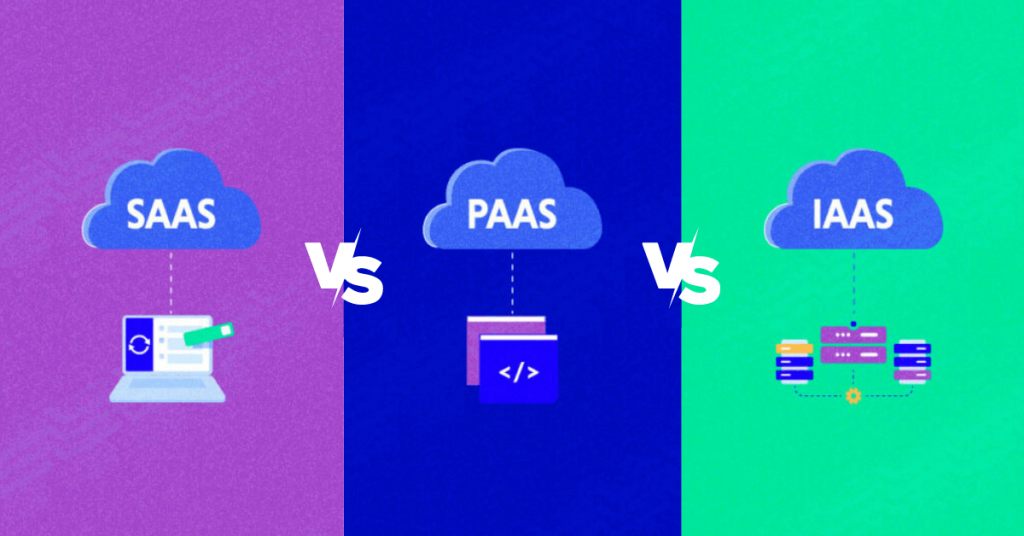Launching a Software as a Service (SaaS) product in beta is an exciting milestone for any development team. It allows you to test your product with a select group of users, gathers valuable feedback, and iterate on your offering before the full launch. In this article, we will explore effective strategies for collecting feedback during a SaaS beta launch and maximizing its value to ensure the success of your product.
SaaS Beta Launch – Definition | Meaning
A SaaS (Software as a Service) Beta Launch refers to the release of a software application in its testing phase to a limited number of users, often referred to as beta testers or early adopters. During this stage, the SaaS company aims to gather feedback and data from real users to identify and resolve any bugs, usability issues, or areas for improvement before the full-scale product launch.
A SaaS Beta Launch is an essential step in the software development lifecycle that allows companies to engage with their target audience, validate their product, and refine its features based on user input. It provides an opportunity for beta testers to experience the software firsthand, share their thoughts, and suggest enhancements. By collecting valuable feedback during the beta phase, SaaS companies can fine-tune their product, enhance user satisfaction, and increase the chances of a successful launch.
What Is Beta Testing And Why It Is Important For SaaS Product Launch?
Beta testing is the process of releasing a software-as-a-service (SaaS) product to a select group of users for testing and feedback before its official launch. During beta testing, real users actively engage with the product, providing feedback on its functionality, usability, and identifying any issues or bugs. This feedback helps the development team uncover and address potential problems, improving the product’s overall quality. Beta testing plays a crucial role in ensuring that the final product meets user expectations, enhances user experience, and increases the chances of a successful launch.
For effective beta testing, you can find many online platforms to get your product tested. This platform helps you get your software product tested and provides you with valuable feedback. For example, BufferApps is the perfect SaaS launch platform to launch your SaaS product. It offers a beta launch where you gain exposure, real user feedback, more eyeballs, early adopters and customers for your SaaS product. It makes sure your product reaches the right person to get genuine feedback.
Here’s why beta testing is important for SaaS Product Launch:
- Identify Issues: Beta testing allows real users to explore the SaaS product and uncover any bugs, glitches, or usability issues that may have been missed during internal testing. By providing feedback, beta testers help identify and address these issues before the product reaches a wider audience.
- User Feedback: Beta testing enables SaaS companies to gather valuable feedback from their target users. This feedback helps understand user expectations, preferences, and pain points, allowing for improvements to be made that align with user needs. Incorporating user feedback enhances the overall user experience and increases customer satisfaction.
- Validate Assumptions: Beta testing helps validate assumptions made during the product development phase. It allows SaaS companies to test whether the product meets the desired outcomes and whether it effectively solves the identified problem. By validating assumptions, beta testing reduces the risk of launching a product that may not meet user expectations.
- Usability Testing: SaaS products need to be intuitive and easy to use. Beta testing provides an opportunity to evaluate the product’s user interface, navigation, and overall usability. By observing how users interact with the product, developers can identify areas of improvement, streamline workflows, and enhance the overall user experience.
- Performance and Scalability: Beta testing helps assess the performance and scalability of a SaaS product under real-world conditions. By subjecting the product to varying usage patterns, loads, and data volumes, developers can identify performance bottlenecks, optimize system resources, and ensure the product can handle the expected user base.
In summary, beta testing is essential for SaaS products as it helps identify issues, gather user feedback, validate assumptions, improve usability, assess performance, and gain a competitive advantage. By incorporating user insights early in the development cycle, SaaS companies can enhance their product’s quality, increase user satisfaction, and increase the chances of a successful launch.

Strategies For Collecting Feedback During a SaaS Beta Launch
Collecting feedback during a Software as a Service (SaaS) beta launch is crucial for identifying issues, improving user experience, and making informed decisions about the product. Here are several strategies you can employ to effectively gather feedback during a SaaS beta launch:
1. Define Clear Objectives for Feedback
To make the most out of your beta launch, it’s essential to establish clear objectives for collecting feedback. Define specific goals you aim to achieve and the metrics you will use to evaluate the success of your beta phase. For example, you might set objectives like increasing user engagement, identifying usability issues, or gathering insights for product enhancements.
By defining these objectives, you provide your team with a clear focus and direction, allowing them to prioritize feedback based on the defined goals. Moreover, it enables you to measure the effectiveness of your beta launch and make data-driven decisions to improve your product.
2. Identify Target Users and Segments
Understanding your target users and their specific segments is crucial for effective feedback collection. By identifying the right user segments, you can gather more targeted insights and ensure that you’re addressing the needs of your intended audience.
Start by defining your user personas and segmenting your beta users accordingly. This segmentation could be based on factors such as user demographics, usage patterns, or industry verticals. Once you have identified the segments, reach out to them through personalized communication channels and tailor your feedback collection strategies accordingly.
3. Choose the Right Feedback Channels
During a SaaS beta launch, there are various feedback channels you can utilize to collect valuable insights from your users. Each channel has its advantages and limitations, so it’s crucial to choose the right ones based on your objectives and target audience.
Channels For Collecting Feedback During a SaaS Beta Launch
- In-app surveys: Integrating surveys within your application provides a seamless way for users to provide feedback while they’re actively using your product. This real-time feedback can uncover specific pain points or identify features that users find valuable.
- Email: Sending targeted email surveys to your beta users allows you to gather detailed feedback outside the application. Email surveys can be personalized and provide an opportunity for users to provide more elaborate responses.
- Community forums: Creating a dedicated space where beta users can engage with each other and with your team fosters a sense of community. Forums enable users to share their experiences, exchange ideas, and provide ongoing feedback, leading to valuable insights and discussions.
- Social media: Leveraging social media platforms can help you reach a wider audience and gather feedback from users who may not be actively participating in your beta program. Monitor relevant hashtags, engage with user comments, and encourage users to share their feedback publicly.
- User interviews: Conducting one-on-one interviews with selected beta users allows for in-depth discussions and a deeper understanding of their experiences. This qualitative feedback can provide valuable insights into user motivations, pain points, and suggestions for improvement.
- Customer support: Offering dedicated customer support channels, such as live chat or a support ticket system, allows users to seek assistance and provide feedback directly to your support team. This can uncover usability issues, provide insights into user frustrations, and facilitate prompt responses.
Consider using a combination of these channels to collect feedback from various perspectives and touchpoints in your user journey. Tailor your approach to the nature of the feedback you seek, the user segments you’re targeting, and the stage of your beta launch.
4. Design Effective Feedback Surveys
Designing clear and concise surveys is crucial to gathering actionable feedback. When creating survey questions, focus on specificity and clarity. Ask questions that elicit specific responses and avoid ambiguous or leading questions.
Use rating scales to gather quantitative data that can be analyzed easily. Additionally, incorporate open-ended questions to encourage users to provide detailed explanations, suggestions, or feature requests. Follow-up questions can be used to dive deeper into specific topics or ask for clarifications.
Keep the surveys short and focused to ensure a higher response rate. Users are more likely to complete surveys that are easy to navigate and require minimal time investment. Additionally, consider using tools that offer skip logic, allowing users to skip irrelevant questions based on their responses, further enhancing the survey experience.
5. Encourage Active Feedback Participation
To ensure active participation from your beta users, incentivize feedback and provide rewards for valuable contributions. Offering rewards, such as extended trial periods, discounts on the final product, or exclusive access to new features, can motivate users to engage with your feedback collection efforts.
Create a sense of community among your beta users by organizing virtual events, webinars, or forums where they can connect with each other and with your team. Foster engagement by actively responding to feedback, acknowledging valuable contributions, and incorporating user suggestions where feasible. When users feel heard and see the impact of their feedback, they are more likely to remain engaged throughout the beta phase.
6. Analyze and Prioritize Feedback
Collecting feedback is just the first step; analyzing and prioritizing it is equally important. Categorize the feedback you receive into different themes or areas of improvement. This categorization helps identify patterns and prioritize the most critical issues.
Establish a system for rating the impact and feasibility of each feedback item. This rating system allows you to focus on high-impact, high-feasibility items that align with your objectives. Prioritize addressing usability issues, critical bugs, or feature gaps that hinder user experience or prevent core functionality.
Maintain transparent and effective communication with your development team. Clearly communicate the feedback findings, highlight the most critical issues, and collaborate on effective solutions. A collaborative approach ensures that feedback is effectively incorporated into development cycles, leading to iterative improvements.
7. Iterate and Improve the Product
A SaaS beta launch is an iterative process. Use the feedback collected to drive continuous improvement of your product. Implement the necessary changes, fixes, and enhancements based on the feedback and communicate these updates to your beta users. This demonstrates that you value their contributions and are committed to building a better product.
Regularly update your beta users on the progress you’ve made, share release notes, and showcase how their feedback has shaped the product’s evolution. This transparency and engagement foster a stronger relationship between your team and the beta users, creating a foundation of trust and advocacy for your product.
Conclusion – Feedback Strategies For SaaS Beta Launch
Collecting feedback during a SaaS beta launch is a vital component of building a successful product. By defining clear objectives, identifying target users and segments, choosing the right feedback channels, designing effective surveys, encouraging active participation, analyzing and prioritizing feedback, and iterating on your product, you can gather valuable insights that drive improvements and meet customer needs.
Remember, the beta phase is an opportunity to engage with your early adopters, learn from their experiences, and refine your offering. Embrace their feedback as a catalyst for growth and innovation. By implementing these effective strategies, you can leverage the power of feedback to ensure the success of your SaaS product in the market.
FAQs – Feedback Strategies For SaaS Beta Launch
Gathering user feedback during a SaaS beta launch is crucial as it helps identify issues, enhance usability, and align the product with user needs, resulting in a more successful and user-friendly final release.
To effectively engage beta testers, you can establish clear communication channels, provide detailed guidelines, offer incentives for participation, and actively solicit feedback through surveys or feedback sessions. Engaging testers ensures a higher response rate and more valuable insights.
Encourage detailed and constructive feedback by providing specific prompts or questionnaires, offering incentives for comprehensive responses, acknowledging and appreciating their contributions, and fostering a positive and collaborative feedback culture. Clear instructions and guidance also help testers provide more meaningful feedback.
To incentivize beta users, you can offer rewards such as early access to new features, exclusive discounts or pricing plans, personalized support, recognition as beta testers, or the opportunity to influence the product’s development. These incentives motivate beta users to actively participate, provide valuable feedback, and feel appreciated for their contributions.
To run a beta program in SaaS, start by defining clear goals and objectives for the program. Select a diverse group of beta testers and provide them with access to the beta version of your SaaS product. Set up communication channels to gather feedback and regularly engage with your testers. Create a structured feedback collection process and prioritize issues based on their impact. Iterate and improve the product based on the feedback received.

